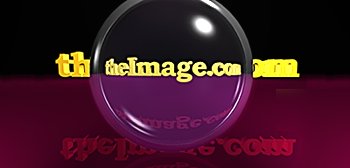
|
|
||||
|
Digital Photography vs
Traditional Photography |
|||||||||||||||||||||||||||||||||||||||||||||||||||||||||||||||||||||||||||||||||||||||||||||||||
|
and decide which has the advantage (•) my vote for the current advantage resolution shadow detail
/ shutter speed
selection • f-stop
control • metering • • film speed /
light balance • frames per
roll • expendables
costs • turn around
time • lens
selection • flash hot
shoe • flash
built-in • • zoom lens
quality • • battery
utilization • preview
pictures • ease of WEB
use • Print
quality • cost • |
|||||||||||||||||||||||||||||||||||||||||||||||||||||||||||||||||||||||||||||||||||||||||||||||||
|
I have set up a comparison of features for both digital and traditional cameras. I have included traditional 35 mm cameras and digital cameras up to about $1000. 35 mm cameras enjoy a longer history, and thus a far wider variety and more possible features. We have arrived at a transition time in the world of digital cameras. They continue to improve each year, and are rapidly catching up with the abilities of the traditional cameras. Frankly they have not arrived yet in the lower cost models, and I really don't think they have matched traditional photography at the high end either, but the gap continues to close. Traditional photography still wins hands down on resolution, and standard camera functionality. What I would call creative control and accessorization in still in the 35 mm world. The largest gap remains in dynamic range. No digital camera, at any price, can match the range of good slide film, and its ability to bring out clean detail in shadows. Built-in exposure control (metering) is a draw in my opinion, both successfully use current technology and both produce superb results. If the flash is built-in they both tend to operate well (exposure wise), but typically suffer from poor placement. (Did I say they were built-in ... hence by definition poor placement.) Built-in flash promotes redeye in people, and gold or silver eye in animals. Both are outstanding here producing high quality redeye. The quality of built-in zoom lenses in the top models is excellent, as one might expect since the same camera companies seem to be making both. As far as choice and quality of supplementary lenses, there is no contest the traditional cameras win out without a doubt. This is true because 35 mm cameras in this price range often support interchangeable lenses, and are not a slave to supplementary add-on lenses. Print quality is not really a camera function, but the final result does count. Standard (film based) print processing produces better and richer images than any of the Inkjet printers or even dye-sublimation printers. Processed prints do not rely on CMYK inks, and pattern dithering to create secondary colors. The differences in archival time and resistance to fading has all but vanished, and may actually be in favor of the digital printers. The resolution, color palette, and color purity still go to traditional photo methods. When it comes to turn around time, the digital cameras are so far ahead, they are out of sight. They have the ability to shoot, and then see an almost immediate result, which means fast feed back. Images can be viewed within a few minutes of their exposure. If you have table top set-ups you can shot, view, correct lighting, and reshoot almost immediately. No lab time, no wait. Also the memory cards in most digital cameras can be used over and over providing a tremendous monetary savings over film and lab costs, and cards can be purchased which can hold 100's or even a 1000 pictures. If the resolution is sufficient for your use (i.e. WEB pages), then conversion to WEB usable images is simple and nearly automatic. Most cameras actually save their images in JPEG format which is acceptable to all WEB browsers. Special post processing is actually available to either system once the traditional photographs are scanned into digital format. So there is no clear winner here. Digital post processing technology is now the usual rather than the unusual. So how about cost? Well to get the same quality and virtually identical functionality provided by a $1000 traditional camera you will need to spend between $3000 and $5000 for a digital camera. Most of what I have been discussing is based on consumer level digital cameras that cost less than $1000. You can get far more camera for $1000 in the traditional world. In conclusion, I don't believe that digital cameras have yet surpassed traditional cameras, and there is still a noticeable difference in the overall image quality. BUT, and it's a big BUT, digital photography has allowed me to explore techniques, and try things that I would not have done due to time and monetary constraints. The digital world is coming, and it will catch up with most of traditional photography's current advantages. This is a time of transition and a good time to learn a new and useful technology. Think of it as just another tool in your camera case, and not a complete replacement for what you do now. There is still a place for both. |
|||||||||||||||||||||||||||||||||||||||||||||||||||||||||||||||||||||||||||||||||||||||||||||||||